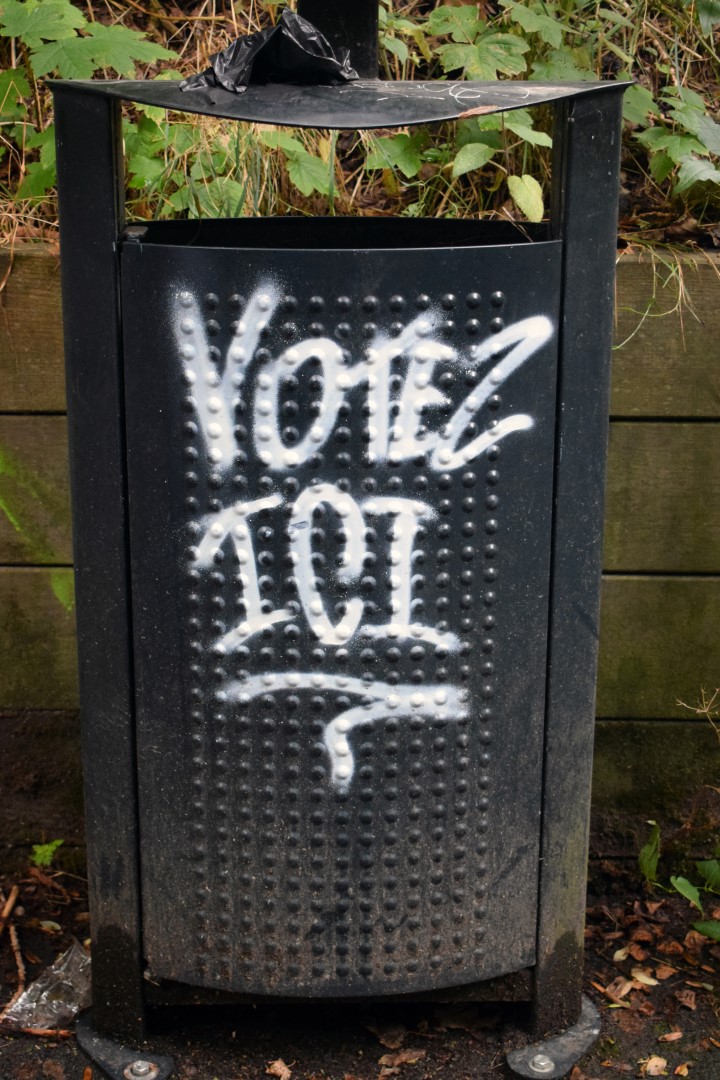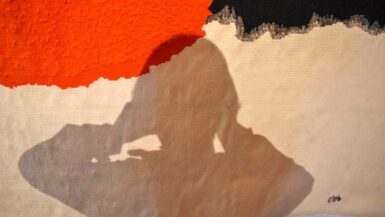French presidential elections were just a couple of months ago and there are still many political stickers and posters everywhere. The new president, Emmanuel Macron, an underdog and political novice, is featured in several current affairs magazines as people discover his plan, program and vision for France.

No more “yellow cheese”, “orange cheese” or “string cheese“—although to be honest, I did see the latter at the supermarket today, merde—this is the land where you can buy blocks of aged, stinky cheese made from unpasteurized milk. Even the smallest supermarket has an entire aisle dedicated to the many kinds of cheeses available, from soft cheese like brie to semi-soft cheese like Port Salut, from blue cheese to washed-rind cheese. Bottom line is, whatever you buy, it doesn’t taste and feel like rubber.

From questionable and obscure modern art projects to historical masterpieces, from improvised street performances to stunning architecture, la culture matters in France. Art is everywhere and the French value their preferred cultural hotspots. Centralized public funding aims at providing an alternative to the commercialization of culture because many French think that standardizing it into mass markets reduces communal identity.

Work/life balance is taken seriously and unlike in North America, taking time off is completely normal. Employees enjoy 11 paid public holidays plus 25 paid vacation days and even small businesses close for a few weeks or longer in July or August.

Many French still don’t trust beef because of the mad cow crisis, but chicken and pork are popular meat choices. Other options that can be seen as “exotic” to a foreign eye include duck, horse, and rabbit. Deli meat–sliced-to-order or pre-sliced–is also a common lunch option, eaten in hot or cold sandwiches.

There is a bakery at every corner because absolutely no one bakes bread at home or buys industrial, packaged sliced bread (which, by the way, is known as “American bread”). Peak hours in bakeries are around noon, especially if they sell fresh cold sandwiches, and at the end of the day when people buy bread for dinner.

Hanging out at historical sites is completely normal. You’ll see people having lunch sitting around an old fountain, studying in century-old universities, shopping in stores that have been operating for hundreds of years, and yes, taking a yoga class on the castle grounds.
There are overall few national flags displayed—much less than in the US or in Canada—but regional flags are very common. In Brittany, the Gwenn-ha-du (black-and-white flag) is unofficially widely used in town halls, and flown on boats and has become the accepted symbol for all Brittany and Bretons.
France still has many political movements that would be seen as strange elsewhere in the world, including a royalist party, a communist party, an anarchist federation, many anti-capitalist parties, A Trotsky party and other oddities in the political landscape.





Macron is not really a novice, he was sinister of the economy in Valls II governement. And he was bankster, and he did the E.N.A, so even if he was not very reknowned before 2014, he is in the system since a long time.
And it is not that weird to have a communist party : we have one in Alberta 🙂
I think I first heard about him in 2015… not that I’m a reference, I don’t follow French politics closely anymore. That said, he is still “new” to many French, as in he didn’t run in any major election before.
Yeah, he is not a Chirac or a Aubry, but he is just the continuation of more than 40 years of French politics. Same kind of path, and worse, completely sold to deregulations and worsening of workers rights.
Oh yes, I don’t see him as the new kid on the block. His politics are clearly right-wing to me. Just his face felt new.